
Pierre Corneille was a French tragedian. He is generally considered one of the three great seventeenth-century French dramatists, along with Molière and Racine.
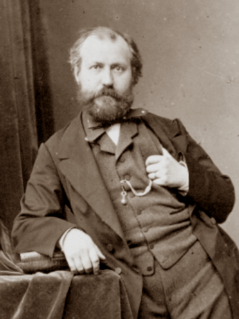
Charles-François Gounod, usually known as Charles Gounod, was a French composer. He wrote twelve operas, of which the most popular has always been Faust (1859); his Roméo et Juliette (1867) also remains in the international repertory. He composed a large amount of church music, many songs, and popular short pieces including his Ave Maria, and Funeral March of a Marionette.

Legio XII Fulminata, also known as Paterna, Victrix, Antiqua, Certa Constans, and Galliena, was a legion of the Imperial Roman army. It was originally levied by Julius Caesar in 58 BC, and the legion accompanied him during the Gallic Wars until 49 BC. The unit was still guarding the Euphrates River crossing near Melitene at the beginning of the 5th century.
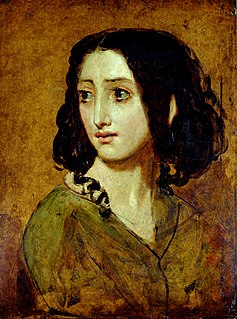
Elisabeth Félix, better known only as Mademoiselle Rachel, was a French actress. She became a prominent figure in French society, and was the mistress of, among others, Napoleon III, Prince Napoléon, and Alexandre Colonna-Walewski, the illegitimate son of Napoleon I. Efforts by newspapers to publish pictures of her on her deathbed led to the introduction of privacy rights into French law.

Grand opera is a genre of 19th-century opera generally in four or five acts, characterized by large-scale casts and orchestras, and lavish and spectacular design and stage effects, normally with plots based on or around dramatic historic events. The term is particularly applied to certain productions of the Paris Opéra from the late 1820s to around 1850; 'grand opéra' has sometimes been used to denote the Paris Opéra itself.

Salammbô is an opera in five acts composed by Ernest Reyer to a French libretto by Camille du Locle. It is based on the homonymous novel by Gustave Flaubert (1862). Initially refused by Paris, Reyer's opera enjoyed its first performance at the Théâtre Royal de la Monnaie in Brussels, on 10 February 1890, with sets designed by Pierre Devis and Armand Lynen. The Parisian premiere at the Palais Garnier took place on 16 May 1892 with costumes by Eugène Lacoste and sets by Eugène Carpezat, Auguste Alfred Rubé and Philippe Chaperon, and Amable and Eugène Gardy.

Theveste was a Roman colony situated in the present Tébessa, Algeria.
This article is an overview of the theatre of France.

Poliuto is a three-act tragedia lirica by Gaetano Donizetti from the Italian libretto by Salvadore Cammarano, which was based on Pierre Corneille's play Polyeucte written in 1641–42. It reflected the life of the early Christian martyr Saint Polyeuctus.

Saint Polyeuctusof Melitene is an ancient Roman saint. Christian tradition states that he was a wealthy Roman army officer who was the first martyr in Melitene, Armenia, under Valerian.
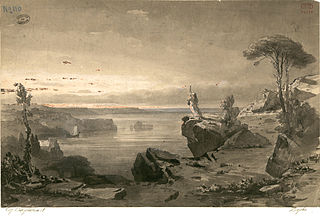
Sapho is a 3-act opera by Charles Gounod to a libretto by Émile Augier which was premiered by the Paris Opera at the Salle Le Peletier on 16 April 1851. It was presented only 9 times in its initial production, but was a succès d'estime for the young composer, with the critics praising Act 3 in particular. It was later revived in 2-act (1858) and 4-act (1884) versions, achieving a total of 48 performances.
Jean-Louis Pichon is a French stage director, opera manager and author.
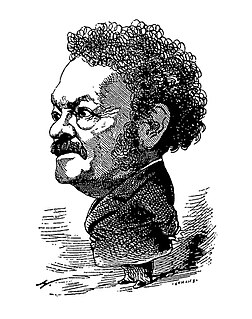
Les martyrs is a four-act grand opera by Gaetano Donizetti set to a French libretto by Eugène Scribe. The libretto was based on one written by Salvadore Cammarano for an original Italian version known as Poliuto, which was not performed until after the composer's death. Pierre Corneille's play Polyeucte written in 1641–42, the story of which reflected the life of the early Christian martyr Saint Polyeuctus, is the original source for both versions.

The Théâtre Lyrique was one of four opera companies performing in Paris during the middle of the 19th century. The company was founded in 1847 as the Opéra-National by the French composer Adolphe Adam and renamed Théâtre Lyrique in 1852. It used four different theatres in succession, the Cirque Olympique, the Théâtre Historique, the Salle du Théâtre-Lyrique, and the Salle de l'Athénée, until it ceased operations in 1872.
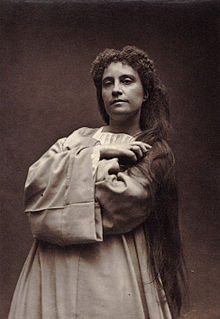
Marie Caroline Miolan-Carvalho was a famed French operatic soprano, particularly associated with light lyric and coloratura roles.

Polyeucte is an opéra by Charles Gounod based on the play about Saint Polyeuctus by Pierre Corneille. The libretto by Jules Barbier and Michel Carré is more faithful to its source than Les martyrs, Scribe's adaptation for Donizetti, and Gounod hoped to express "the unknown and irresistible powers that Christianity has spread among humanity". The subject had occupied Gounod for some ten years. An initial delay was caused by a fire which destroyed the theatre of the Paris Opéra, the Salle Le Peletier, in October 1873. Further delay came about because the first draft remained in the hands of the jealous Georgina Weldon when Gounod left England in 1874 to return to Paris. He had to resort to a lawsuit before resigning himself to recomposing the work from memory, although towards the end of that endeavor, Weldon did return it.
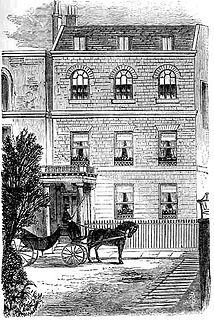
Tavistock House was the London home of the noted British author Charles Dickens and his family from 1851 to 1860. At Tavistock House Dickens wrote Bleak House, Hard Times, Little Dorrit and A Tale of Two Cities. He also put on amateur theatricals there which are described in John Forster's Life of Charles Dickens. Later, it was the home of William and Georgina Weldon, whose lodger was the French composer Charles Gounod, who composed part of his opera Polyeucte at the house.

Marie-Gabrielle Krauss was an important 19th century Austrian-born French operatic soprano. She created major roles in operas by Anton Rubinstein, Charles Gounod, Camille Saint-Saëns, Auguste Mermet, Clémence de Grandval, Errico Petrella, Antônio Carlos Gomes and Émile Paladilhe. She also created roles in local premieres of Verdi and Wagner operas. Krauss was a leading soprano at the Paris Opera for 13 years, and also sang with great success in Italy and Russia.
Polyeucte drama by Pierre Corneille

Auguste Alfred Rubé was a French painter.

















